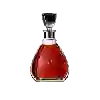
Winery Chrystel et Olivier SaperasRivage André Banyuls
This wine generally goes well with beef, lamb or mature and hard cheese.
Food and wine pairings with Rivage André Banyuls
Pairings that work perfectly with Rivage André Banyuls
Original food and wine pairings with Rivage André Banyuls
The Rivage André Banyuls of Winery Chrystel et Olivier Saperas matches generally quite well with dishes of mature and hard cheese, blue cheese or aperitif such as recipes of raclette with 8 cheeses, blue cheese and walnut cake or mozzarella sticks.
Details and technical informations about Winery Chrystel et Olivier Saperas's Rivage André Banyuls.
Discover the grape variety: Sacy
Sacy blanc is a grape variety that originated in France (Auvergne). It produces a variety of grape specially used for wine making. It is rare to find this grape to eat on our tables. This variety of grape is characterized by small bunches and small grapes. Sacy blanc can be found in several vineyards: South-West, Cognac, Bordeaux, Loire Valley, Burgundy, Provence & Corsica, Rhone Valley, Savoie & Bugey, Beaujolais.
Informations about the Winery Chrystel et Olivier Saperas
The Winery Chrystel et Olivier Saperas is one of of the world's greatest estates. It offers 2 wines for sale in the of Banyuls to come and discover on site or to buy online.
The wine region of Banyuls
Banyuls wines come from the South-eastern Part of Roussillon, in the south of France, in the lower Pyrenees, a few kilometres from the Spanish border. These naturally Sweet wines are consumed both as an aperitif and as a dessert. They come in a wide range of hues, from GoldenGreen (Banyuls Blanc) to Amber (Banyuls Ambré) to the intense garnet of the standard Banyuls Rouge. Unusually among the natural sweet wines of France, all Banyuls wines are made primarily from Grenache grapes of various colors.
The wine region of Languedoc-Roussillon
Languedoc (formerly Coteaux du Languedoc) is a key appellation used in the Languedoc-Roussillon wine region of southern France. It covers Dry table wines of all three colors (red, white and rosé) from the entire region, but leaves Sweet and Sparkling wines to other more specialized appellations. About 75% of all Languedoc wines are red, with the remaining 25% split roughly down the middle between whites and rosés. The appellation covers most of the Languedoc region and almost a third of all the vineyards in France.
The word of the wine: Véraison
A phase in the vegetative cycle of the vine that takes place in summer, usually in August, when the grapes change colour from green to red (for reds) or yellow (for whites). This stage heralds the beginning of ripening.










